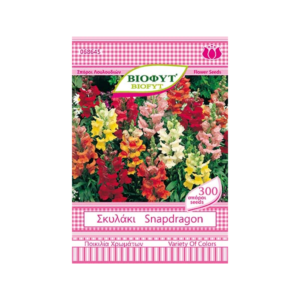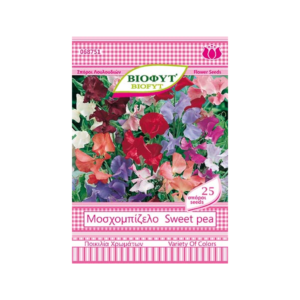Achillea
Achillea
The scientific name is Achillea millefolium (as defined by Linnaeus) and the common name is Achillea or millefolium, and it also has other Greek names depending on the region such as agriapsithia, wormwood, Pisidia, Semesando, Milfeig, Similoudi and Lazarus because with the flowers adorn the children who sing about Lazarus in the villages on Holy Saturday. The English name is Yarrow. In Greece there are 24 varieties of Achilles. It belongs to the composite family (Compositae).
Achillea is cold tolerant, prefers well-drained and sunny soils. It is propagated by seeds in the spring (but this only applies to the main species and not to the hybrids) and by root division. It is mainly threatened by fungi in hot and dry conditions. Its flowers, leaves, seeds and essential oil from the flowers and more rarely from the leaves. Its seeds are somewhat bitter and hot and in cooking they are mostly used cooked.
More Products
Primula
PrimulaThe primrose is the first flower to bloom in winter! Although a low-growing herbaceous perennial flower, the primrose is mainly planted as an annual ornamental and gives us its wonderful flowers from early January to late spring. The primula has characteristic lanceolate foliage that grows in the form of a rosette and is an ideal plant to plant in a pot on the balcony, as well as in the garden to create impressive color compositions. The name primrose comes from Latin and means first, confirming its early flowering in the heart of winter. There are, of course, some varieties of primrose that bloom in the autumn months. The leaves of the primrose resemble lettuce leaves, which is why many call it “lettuce”. There are many types of primroses with a wide variety of colors to choose from, from white, red, purple, yellow, pink, orange, blue, as well as striking bi-color varieties that have been created in recent years.
Snapdragon
SnapdragonThe Snapdragon, a favorite ornamental plant with wonderful flowers, is planted in the spring and is a characteristic plant of the Mediterranean, with rich vegetation. We will find Snapdragon in dwarf varieties from 20-40 cm, medium height from 40-60 cm and tall varieties from 60-120 cm. Although a perennial plant, it is usually planted as an annual in gardens and in pots on the balcony to give us rich flowering and impressive color combinations.
Sunflower Bicolor
Sunflower BicolorThe sunflower, the well-known sunflowers, is a favorite summer plant to decorate our garden or balcony to give us its impressive flowering. The name of the sunflower comes from the fact that its head constantly turns towards the sun’s rays during the day and turns again, in the morning hours, towards the east. The dwarf varieties of sunflower, which reach up to 40-50 cm in height, are suitable for pots, while for the garden we prefer the taller varieties that exceed one meter and are also edible. The characteristic color of sunflower flowers is yellow but now new sunflower varieties have been created in shades from pale yellow to red and brown.
Carnation Pink
Carnation PinkCarnations, one of the classic and much-loved flowers that are traditionally found in the gardens, yards and balconies of Greek homes. The carnation (carnation or dianthus) stands out for its lush vegetation with its characteristic elongated lance-shaped leaves and its rich flowering in impressive colors. There are single color carnation varieties in shades of pink, red, yellow and white, as well as bicolor carnations with wonderful color combinations. This is an extremely popular ornamental plant that, especially in previous decades, was not missing from any home. After all, the carnation has been cultivated since ancient times and was known by the name Dianthos, which means the flower of Zeus. The carnation is planted in the spring and gives us the rich flowering from April to November.
Sweet pea
Sweet peaSweet pea (Lathyrus odoratus, Fabaceae) is a genus of perennial and annual climbing plants native to the south-eastern Mediterranean, Italy, southern France and Greece. The musk pea Lathyrus odoratus is a genus of over thirty perennial and annual aromatic climbing plants, and belongs to the Fabaceae family. It is an annual climbing or erect plant with a height of 60-180 cm and a width of 40-80 cm. The leaves are grey-green, oval 5-7cm long, some have been formed into tendrils for climbing the plant. The flowers of the plant are large, fragrant, butterfly-shaped and grow many together in groups. Creates a rich and deep root system.
Basil Red
Basil RedThere are many types and varieties of basil to choose from. We come across hundreds of varieties of basil, others with smaller or larger leaves, with different colors, tastes and aromas. It is important to mention that most varieties of basil are annuals while there are also some perennials. Depending on our preferences, we can choose curly, broad-leaved, Genovese, nightshade, red (purple), saint or tree basil.









